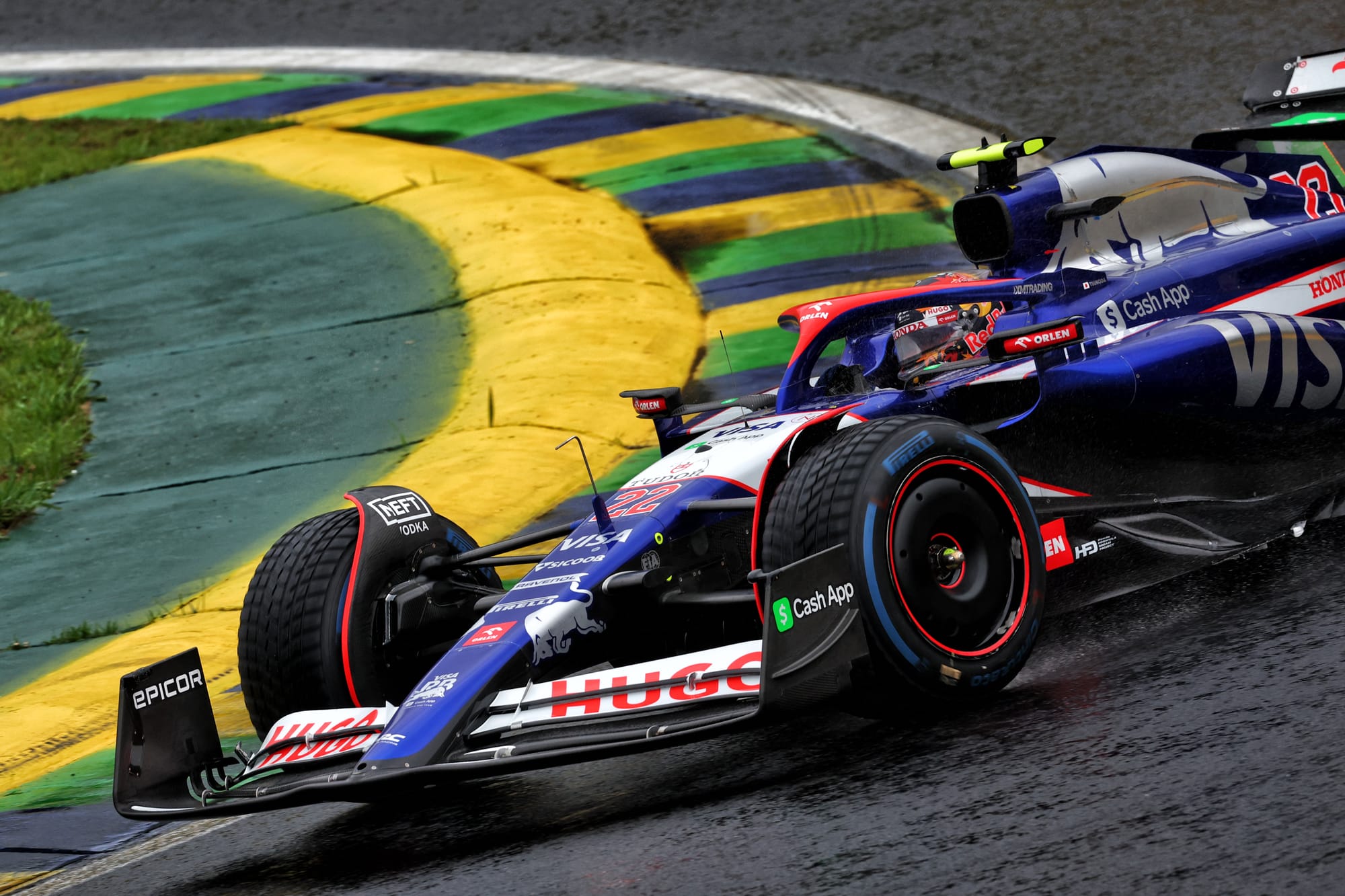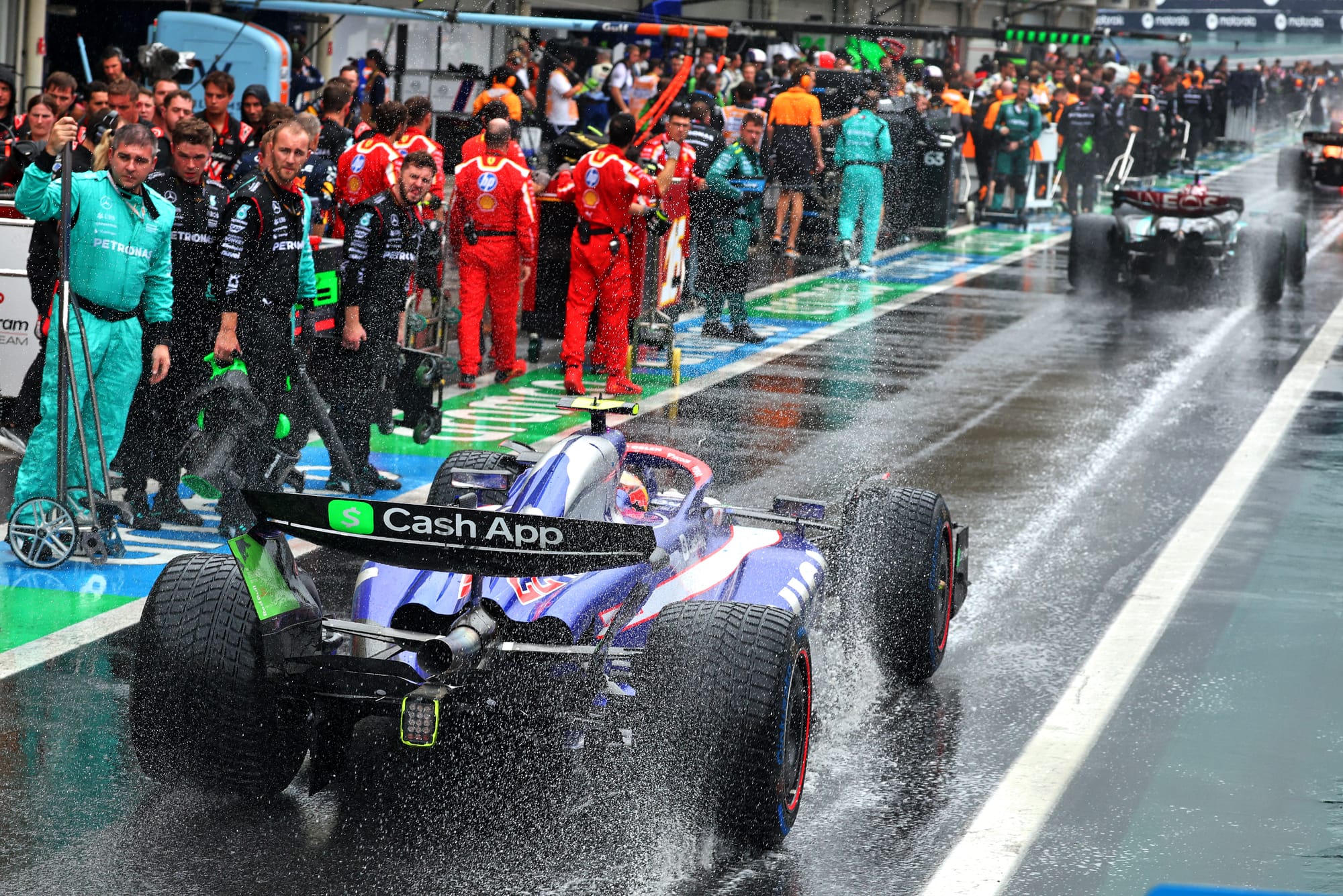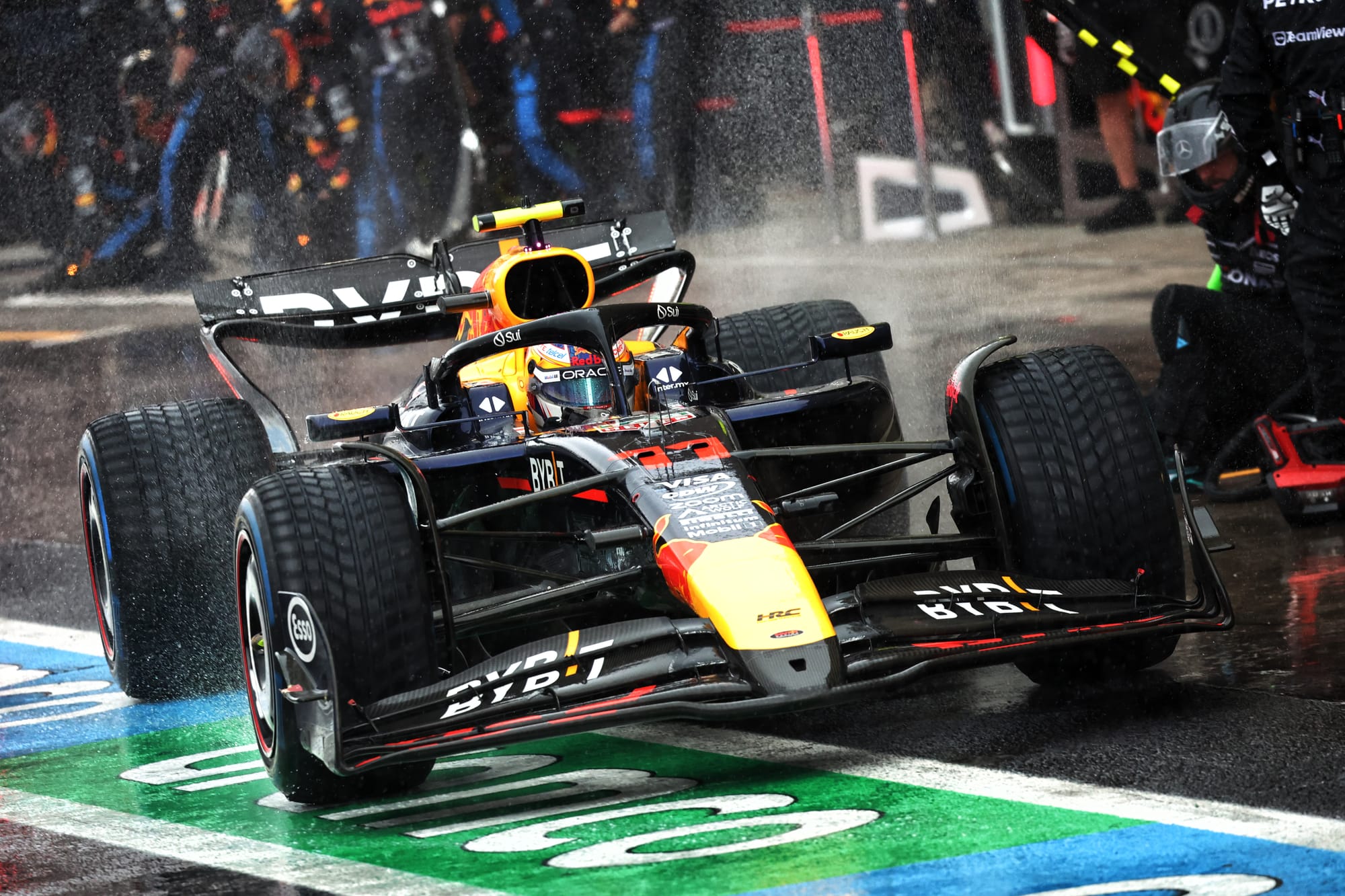

Complaints about Formula 1’s “bad” wet tyre are nothing new - some might even call them tired by now - but the level of weather disruption at last weekend’s Brazilian Grand Prix and some high-profile driver interjections have given the situation new urgency.
Where the conversation might be changing is that Pirelli is set to bring a new tread pattern for next season to contend with it. Drivers will welcome the effort but may not be optimistic about its chances of success - especially as even Pirelli is not exactly radiating confidence about it.
As the field sat in the pits on the Saturday of the Interlagos weekend waiting in vain for qualifying to begin, Lewis Hamilton half-joked to Stefano Domenicali - captured live on F1 TV - “if you give us better wet tyres and blankets we would be able to run in this”.

That was followed by a particularly outspoken Oscar Piastri after the Sunday race in which even in a downpour only Yuki Tsunoda and Sergio Perez tried briefly running wet tyres and most were counting on a red flag to save them from having to.
“The toughest part of the race was behind the safety car trying to stay on the track,” said Piastri.
“I think it kind of exposed a bit of the issue that we have with the wet tyre when everyone is begging for a red flag but refusing to go on to the wet tyre because it’s so bad.
“So it’s a pretty dangerous situation to have cars literally struggling to stay on track behind the safety car, but it’s not really anything new so hopefully we can try and at least change it now.”
Piastri's warning was seemingly proven right by Franco Colapinto, who spun and crashed heavily on the start/finish straight on inters behind the safety car. He said he lost the car on one of the rivers of water streaming across the track.
Every time there’s a wet F1 race there are similar complaints, George Russell called the full wets a “waste of time” after Zandvoort in 2023, which at least opened more debate with Pirelli about what could be done and talk of a potential 'super intermediate' to replace having inters and wets.
Pirelli does know that the wet tyre needs to be improved. But one of the biggest problems is getting enough testing in to be confident in what it's changing.
You can artificially drench one track you are testing at, as Pirelli plans to do at Magny-Cours for a test with Alpine in the coming week, but you can’t do it for all of the tracks. And even if you did, a track might then get repaved, like Interlagos, and behave differently.

Isola wants to test a new tread pattern Pirelli has introduced to GT racing this year, but a lack of chances for representative testing on an F1 car means it can’t be sure if what it’s doing is enough.
“It's true that we need to improve the performance of the wet tyres to generate a proper crossover with the intermediate. That's our target,” said Mario Isola, Pirelli’s motorsport boss.
“Next year we will have a new wet tyre with some small modifications, because unfortunately we didn't have the possibility to test wet tyres on a high severity circuit, a proper test on high severity circuit, that is exactly what we miss.
“The indication from data and when we had the possibility to use wet tyres, was to change a little bit the tread pattern, to work on the construction and work on a new compound, which we did.
“We found an improvement. I cannot tell you if it is enough or not.”
Pirelli has 40 days of tyre testing per year, but that's to test dry and wet weather tyres, and you can't guarantee rain on any of those days. Even when you can artificially create conditions, it still isn't the same.
Also, this is a lot of money and effort to be spending on a set of tyres that sit around and maybe get used once a year, isn't it?
Ultimately as Piastri points out, the drivers are choosing to stay on the intermediates because they feel the wets are so poor.
Isola did add “we are fully aware we need to improve the performance of the wet tyre, but you can run on these wet tyres, it's not that you can't run”. So while Pirelli accepts the wets could be better, it denies they’re as bad as their reputation.
Could the FIA therefore mandate wet tyres in certain conditions?

But who would make that call? What information would they - as someone who isn’t currently on track as an F1 driver in a current car - be making this decision based on? And surely that would stymie some of the potential for tactical nous and driver ability to make a difference in switching to intermediates at a fortuitous time to gain an advantage.
Conditions are always changing so a blanket call to force everyone to use the wet that’s already established as not being a good tyre doesn’t seem feasible or wise.
Visibility has been another long-running issue for current F1 cars in the wet, and a new wet tyre, tread pattern, compound or construction isn’t going to solve that.
In fact, there's a correlation, because a full wet needs to displace large amounts of water, which in turn creates more spray, equalling visibility issues.
F1 had been planning wheel arches since 2022, but called time on that testing earlier this year, saying it was looking for alternatives.
It’s not clear what the alternative might look like but it’s clear the FIA knows this is an issue and wants to avoid embarrassing instances of sessions being cancelled.
For now there’s no solution to that. The revisions Pirelli intends to bring next year might at least call time on the tired - but important - complaint that the current wet weather tyre isn’t fit for purpose. But maybe only to be replaced by complaints that its successor isn’t good enough either.